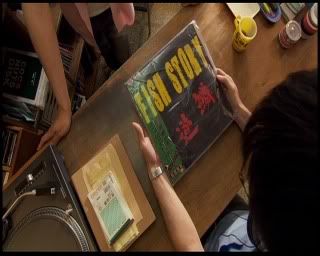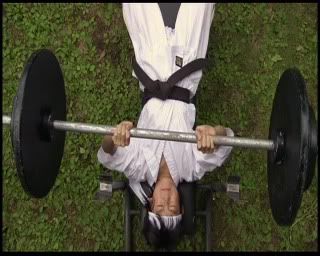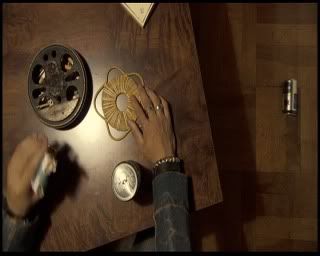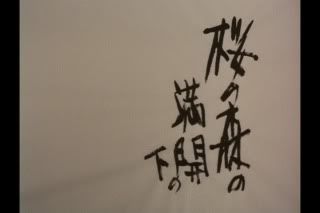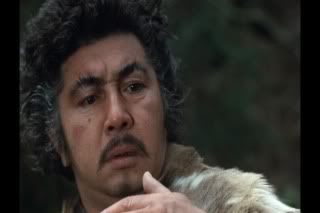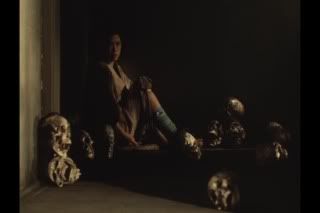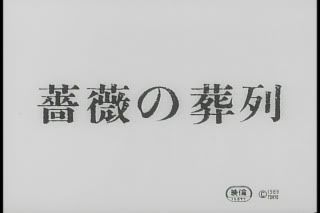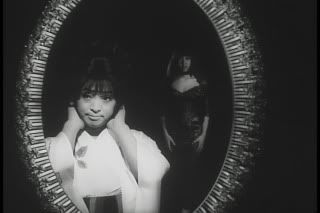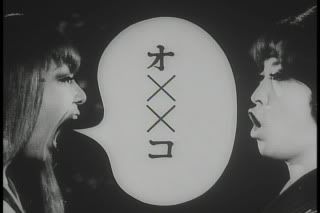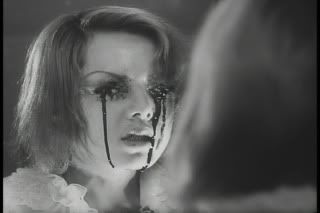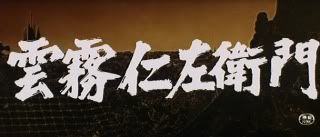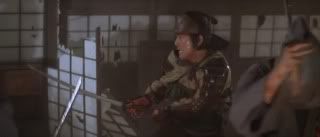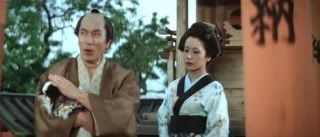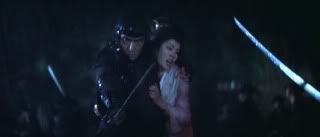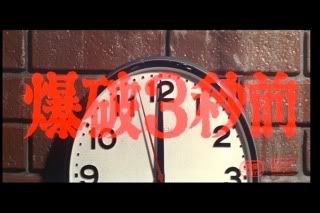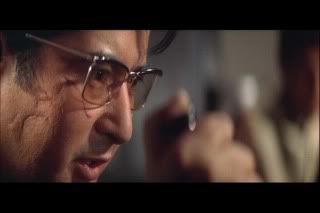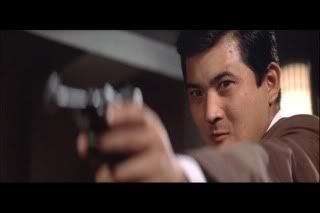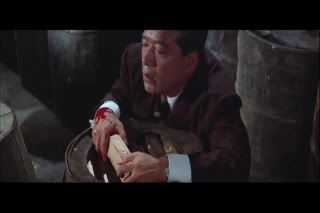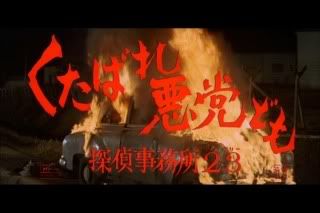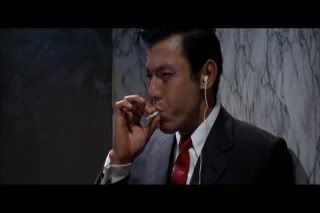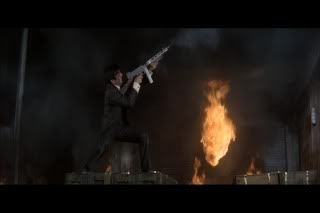This is a rather big cheat, as though i'm writing this for the Wildgrounds Japanese Blogathon it's actually an international production - though co-produced by Toei Company and lensed in Japan - with an entirely English speaking cast. That said, it was directed by the late, great Kinji Fukasaku (who had a long career directing genre films, but might be best known for helming Battle Royale) and features plenty of miniature special effects by Toei's usual Godzilla film crew, so i'm thinking it should still count. Add in the fact that The Green Slime has just been released in beautiful widescreen through the great folks at the Warner-Archive and I don't think the timing could be much better. Considering how long the film has only been available in muddy, painfully cropped VHS versions, this new version is practically a revelation.
Which isn't to say that this film is sterling. Even compared to the rough approximation of science expected in sci-fi films of the time, this one will consistently be having you scratch your heads. Despite coming out the same year as 2001: A Space Odyssey, the special effects in The Green Slime are more than a little rough around the edges, though have plenty of goofy charm. When you see a space station burning in space, sending smoke spiraling upwards you sort of just have to go with it. Combine with performances that run the gamut from stiff to uptight, and settings that represent that special 1960s view of the future (go-go boots, miniskirts and lots of flashing lights) and you're in for a very specific kind of pleasure.
It's the future and Commander Jack Rankin (Robert Horton) is pulled out of his impending retirement when some brainy science people at the United Nations Space Command discover an asteroid headed towards planet earth. Jack is plenty conflicted about his past - particularly his former friendship with Commander Vince Elliott (Richard Jaeckel from The Dirty Dozen) - but accepts the (apparently suicide) mission to plant charges on the asteroid, despite having to prepare for the mission on space station Gamma-3, which is currently Commanded by.. Vince Elliott. Are you getting all of this?
To make things even more complicated, Vince's current fiancée is Dr. Lisa Benson who used to be Jack's gal and still has rather obvious feelings for him, much to the perpetually intense Vince's chagrin. Despite the hard feelings, Vince volunteers to join the mission and the group successfully carry out their mission thanks to some heroics from Rankin. However, the scientist guy they brought along found a green slimy life form on the planet, and accidentally brought some of it back with him. You may be wondering if this slime feeds off electricity and rapidly grow into tentacled creatures that run amuck around the space station, and your suspicions would be correct.
Despite in-fighting, Jack and Vince decide to corral the creatures - who have the ability to heal themselves and procreate from a drop of blood - into a section of the space station and blow it up real good. When this proves only to litter the side of Gamma-3 with the creatures - realized in one of the film's crummier effects - Rankin makes the decision to evacuate the space station before demolishing the whole thing. There are lots of rubber suits, heroic sacrifices, and plenty of the titular green slime to go around.
I mentioned the goofy charm of the special effects in this and other late 60s Toho monster movies, and while this one doesn't have the wholesale destruction evident in the Godzilla movies of the time, there's still plenty of impressive (though totally unconvincing) model-work to be seen here. The actual green slime creatures are pretty terrific, with waving tentacles (often with visible guidelines) and a giant red eye that can blink, though we never see more than a handful on-screen (except for the rather poor looking shots of the outside of Gamma-3). Gamma-3 itself looks like something out of The Thunderbirds, and while it looks ok when it's spinning silently in the cosmos, once you add smoke and fire to the equation it's a bit difficult to take seriously - especially with a very visible wire holding it up.
While the actual plot has echoes of many 50s science-fiction films - the unkillable creatures in a remote location bring to mind The Thing From Another World, while the character of the scientist whose wish to study the creature ends up nearly killing us all is a staple of the genre- the film's biggest flaw is that the main characters are simply too unpleasant. While Rankin is shown to be tough-as-nails and a quick thinker, he's also ego-maniacal and makes nearly as many bad decisions as Vince, who is a perpetual screw-up throughout. Luciana Paluzzi (best known as Fiona Volpe in Thunderball) as Lisa is certainly attractive, but is particularly unconvincing as a doctor (what is she doing with that stethoscope?). While the performances are stiff - and not helped by the sometimes shaky dubbing - the leads are fine, it's just the characters who have difficulty holding interest.
Blame for this has to go to the committee of television and b-movie writers who collaborated on the script, including Batman co-creator Bill Finger, who weighed down a fun, pulpy adventure film with unnecessary melodrama and cardboard characters. Director Fukasaku does the best he can keeping things moving, but it's sometimes at the expense of continuity as i'm still not quite sure I fully grasp some of the crew's plans in the final half hour. Much can be forgiven, however, thanks to the inclusion of one of the very best science fiction theme songs ever. Composed by Charles Fox, the psychedelic song plays over the opening credits and it is outstanding. The film's actual score is comparatively subdued, though is occasionally inappropriately cartoonish during what should be rather tense scenes.
When developing the concept for what would eventually become Mystery Science Theater 3000 the creators used segments from The Green Slime to exhibit the kind of fun but ridiculous films they would be featuring, and it's easy to see why it was chosen. Full of ridiculous dialogue played totally straight and plenty of fun monsters and explosions, the film takes itself just seriously enough to remain enjoyable fun despite flat characters and inconsistent special effects. Lots to love for fans of monster movies, and thankfully given a wonderful looking DVD release that shows off its dated - but still wonderfully enjoyable - style.







